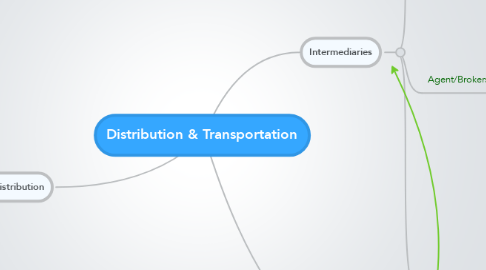
1. Distribution
1.1. Steps involved in moving & storing products
1.2. Movement starts from producers end at consumers
1.3. ensure right things at right place right time
1.4. happens when the product moves to another stage of logistics
2. Intermediaries
2.1. Wholesalers/Distributors
2.1.1. Break bulk
2.1.1.1. Buy big nums from producers
2.1.1.2. Sell small numbers to consumers
2.1.2. storage facilities for
2.1.2.1. producer
2.1.2.2. consumer
2.1.3. producers save cost towards having to contact consumers
2.1.4. Marketing Responsibility shared with wholesaler
2.1.5. D.C(Distribution Centre) can be owned by retailer
2.2. Agent/Brokers
2.2.1. Usually used in international Markets
2.2.2. Agents are based on Commision
2.2.2.1. Agent does not hold the title of the product
2.2.2.2. they just secure orders
2.2.3. Stockist Agent
2.2.3.1. hold Consignment stock
2.2.4. Main contact point for specialist product
2.2.5. difficulty in controlling
2.2.5.1. due to cultural differences
2.2.6. training, motivation to agents cost $$
2.3. Retailers
2.3.1. close relationship with the customer/consumer
2.3.2. hold wide range of products
2.3.2.1. provides variety to consumers
2.3.3. Offer Consumer Credit
2.3.4. Does Marketing for products/Brands
2.3.5. Final Selling Price decided by them
2.3.6. Brand Image
